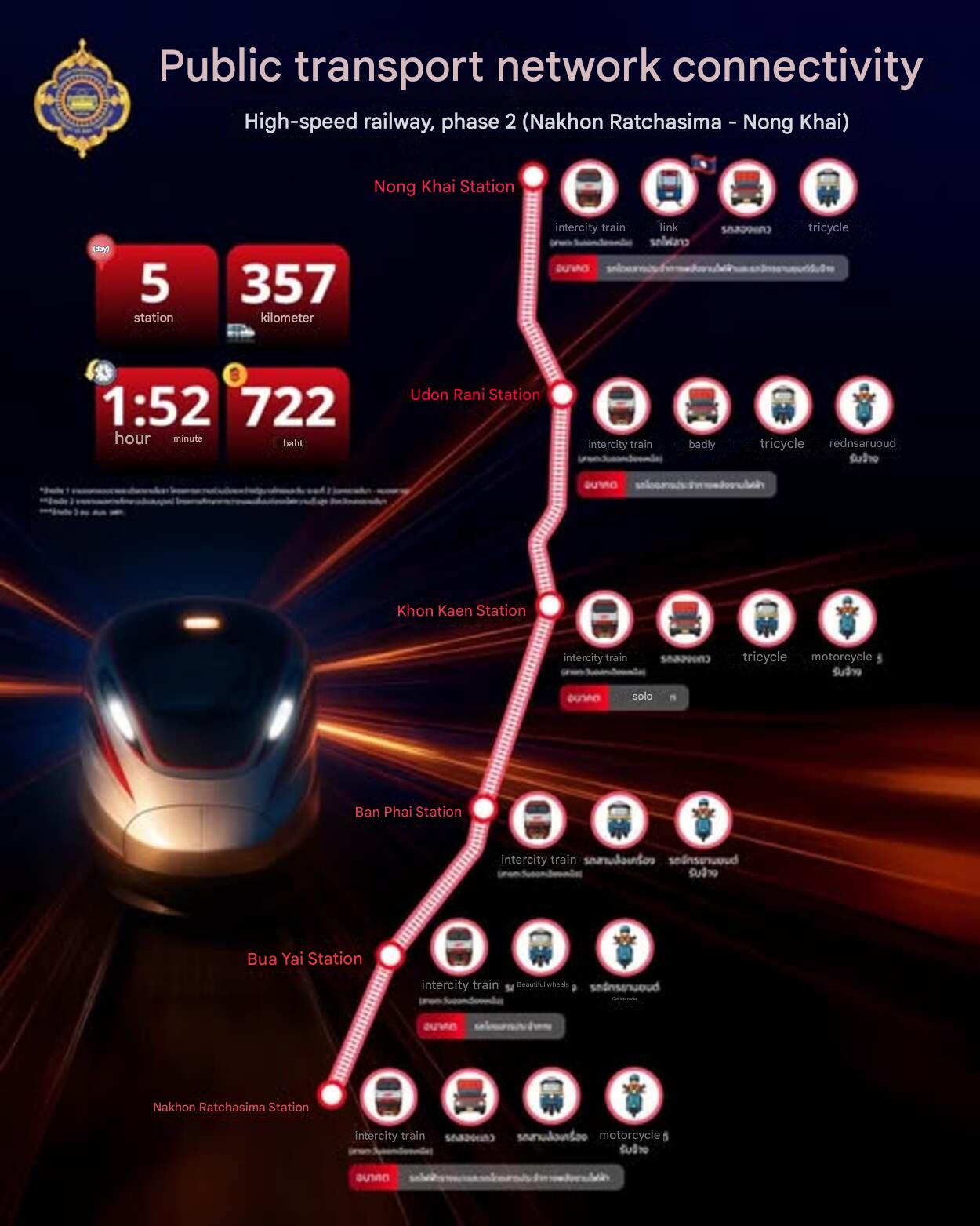Thailand is moving forward with the second phase of its Thai-Chinese high-speed rail project, extending the line from Nakhon Ratchasima to Nong Khai. The project, which covers a 357-kilometre route, is designed to improve regional connectivity and provide faster, more seamless travel across key northeastern provinces.
The expanded rail line will stop at five key stations—Bua Yai, Ban Phai, Khon Kaen, Udon Thani, and Nong Khai—while integrating with existing regional and urban transport systems. Travel time between Nakhon Ratchasima and Nong Khai is expected to be reduced to just under two hours, with a projected fare of 722 baht.
Connectivity at each station has been planned to accommodate current and future transportation needs. In Khon Kaen and Udon Thani, which already have developed urban networks, local transit options such as motorcycle taxis, modified trucks, and in the future, electric buses and light rail lines, are expected to support last-mile travel.
Feeder lines from other regions are also part of the plan. Bua Yai station links to the Kaeng Khoi–Bua Yai railway, while Ban Phai station connects with the future Ban Phai–Mukdahan–Nakhon Phanom route. These lines will serve as secondary corridors to the high-speed rail, though experts emphasize the need for carefully coordinated train schedules, allowing at least a 20-minute transfer window for passengers to move between systems efficiently.
The high-speed rail project, a collaboration between the Thai and Chinese governments, is part of Thailand’s broader effort to enhance its transportation infrastructure and economic ties within the Greater Mekong Subregion. The second phase is currently awaiting the bidding and construction stages.
The project has been developed through detailed studies by the Ministry of Transport, Department of Rail Transport, and the Office of Transport and Traffic Policy and Planning, with support from the State Railway of Thailand.



